Pantry staples are called staples for a reason, right? These are the items that every kitchen should have! They are the ingredients that you will use most often, to cook all your favorite dishes. This includes items like sugar, flour, spices, olive oil, and even dry pasta.
If you have a habit of buying in bulk and stocking up so you’ll never run out, though, you might want to double check your ingredients. Just how long has that garlic powder been in the cabinet?
While some pantry staples will last for years, others might go bad faster than you think. Here are some of the most common pantry finds, and how long you have before you should toss them!
Related: Quick and Easy Dinner Recipes You Can Make in 30 Minutes or Less
Flour
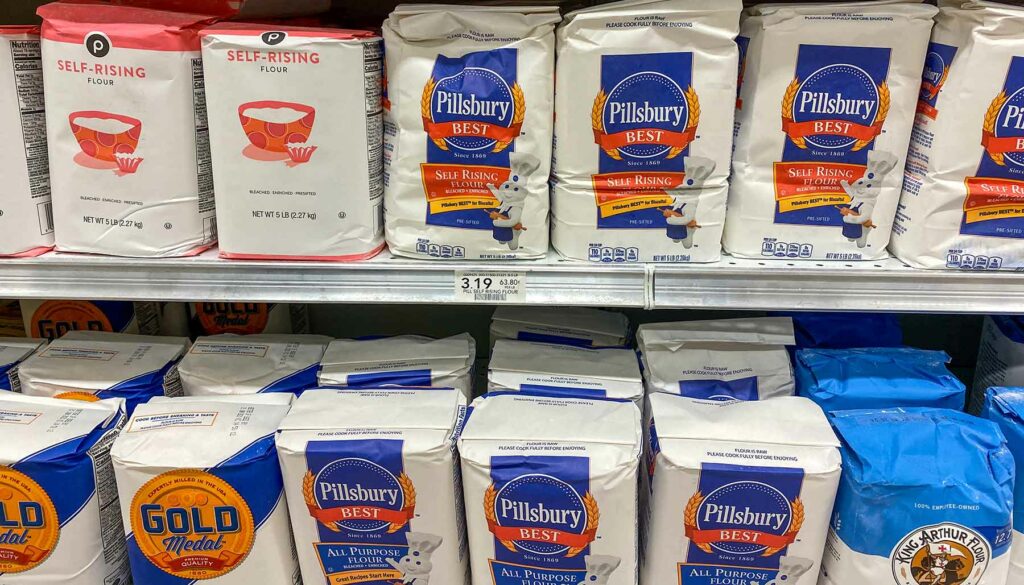
Many people consider flour to be non-perishable, but that isn’t exactly true. It does have a long shelf life, though. In general, regular all-purpose flour will last anywhere from three to eight months, depending on how you store it. Less-processed whole wheat flour and gluten-free varieties, like almond or coconut flour, will spoil faster than white all-purpose flour. Keep it in an air-tight container in a cool, dry place to maximize that shelf life. You can also refrigerate or freeze it if you need to preserve it for longer, but keep it away from moisture to prevent mold.
To determine if your flour has gone bad, take a big whiff! If it smells stale, musty, or sour, toss it. Moisture can also lead to clumps of mold.
Cornstarch
I’ve seen a lot of people say that cornstarch has an indefinite shelf life, and that’s kind of true. On its own, cornstarch won’t spoil. It’s only when cornstarch comes in contact with moisture that it will go bad. Stored in an air-tight container away from moisture and light will help keep it good longer.
Because of its indefinite shelf life, you can safely consume cornstarch even if it’s past the printed expiration date. That is, unless it has come in contact with moisture. If you find your cornstarch has a sour smell or taste, it’s time to throw it away. If it looks clumpy, that means it has been invaded by moisture, which can also lead to mold.
Sugar
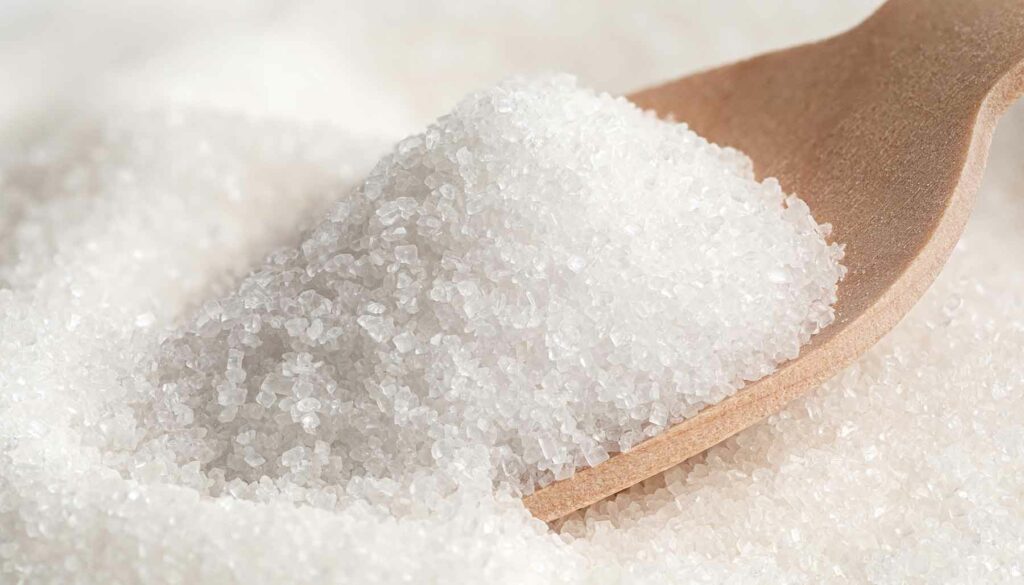
Did you know that sugar acts as an effective preservative in many products? As you can imagine, that means that sugar itself will last forever, too. It doesn’t really expire, especially when stored in a dry, dark place. Heat will encourage crystallization. It’s also worth mentioning that sugar can absorb strong odors, even through some packaging. Keep it away from odors in an air-tight container.
With ingredients like sugar, “expired” and “good” are two different things. While still safe to eat, sugar that has been exposed to air or moisture won’t taste as good, and it can get hard and clumpy.
Honey
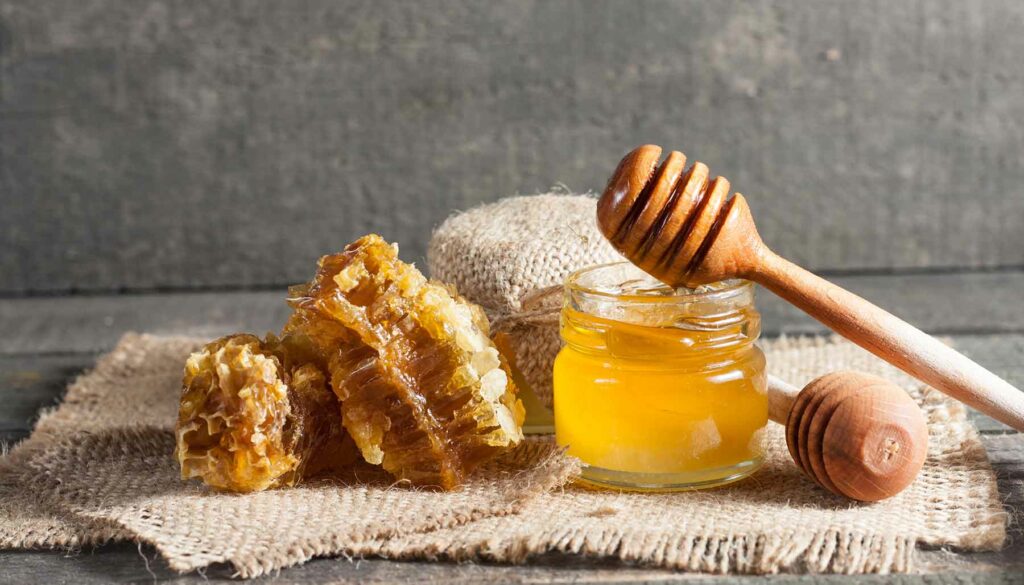
Honey is also full of sugars, so it doesn’t spoil, either. It also helps that it is naturally acidic and is very low in moisture. (Here’s more about why honey doesn’t go bad.) When stored properly, it won’t ever go bad. It might get darker or crystallize, and with enough time, it could end up with a slightly different taste. All that said, it will still be safe to consume.
In order to keep honey indefinitely, it needs to be sealed in an air-tight glass container stored away from heat. Always use a clean, dry utensil to get honey from the jar. This will prevent it from fermenting or getting contaminated with moisture. Metal and plastic containers can oxidize the honey, and heat will change the flavor.
Baking Soda
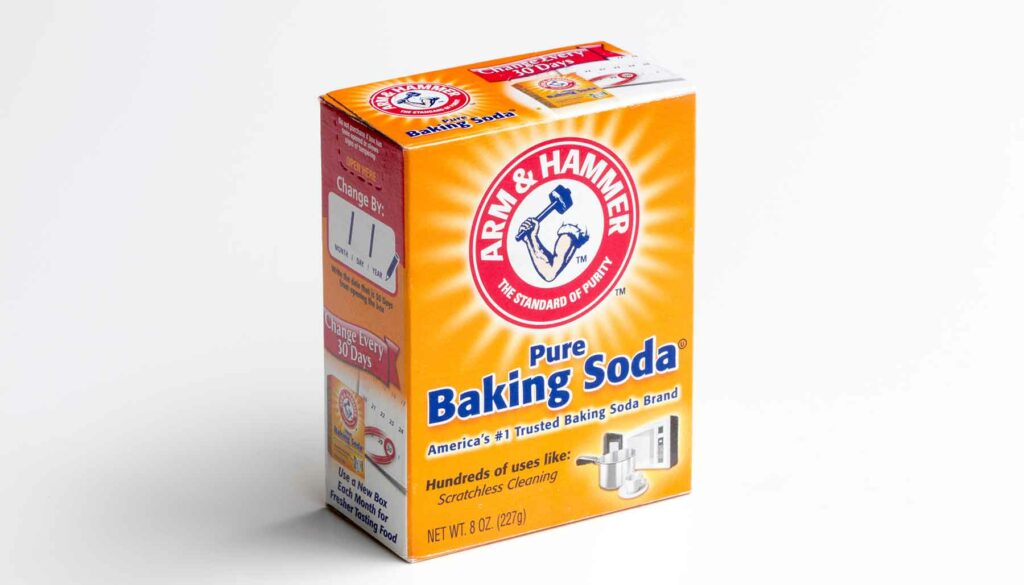
Baking soda isn’t just a pantry staple for cooking; it’s also really useful around the house for things like cleaning and deodorizing. But it won’t be effective in any application if it has gone bad. Baking soda’s shelf life fizzles pretty quickly, only staying good for about six months after the box is opened. You can extend that a little by storing it in an air-tight container in the pantry.
To see if your baking soda is good, sprinkle some into a bowl of vinegar. If the mixture fizzes, the baking soda is still good to go.
Baking Powder
Baking powder has a relatively short shelf life, just like baking soda. Moisture is baking powder’s arch enemy. Baking powder should also be stored in an air-tight container in the pantry, in a dark, dry place. If your baking powder is no longer good, your baked goods won’t rise, leaving you with something flat and dense.
To check your baking powder, add a little bit to hot water. If it fizzes, it’s good. No bubbles means it’s time to toss it.
Salt

How long your salt stays good will depend on what kind of salt it is. Pure salt does not expire. Humans have been using the stuff as a preservative for longer than written records have existed. There is no moisture in salt, and it’s toxic to most microbes. All you have to do is keep it in a cool, dry spot.
It’s all the other kinds of salt that will eventually go bad, sort of. Unrefined sea salt, Himalayan salt, iodized salt, and all the other varieties actually contain more than just salt – they have other compounds and ingredients besides just sodium chloride. While these varieties will still be safe to consume, the quality will eventually decline.
Spices
We often use some spices more than others. You might go through a jar of garlic powder fairly quickly, while nutmeg might stick around for a few years. I know I am guilty of hanging on to spice jars for quite a while. Do these spices ever go bad?
In general, spices don’t really go “bad,” but they just get past their prime. They lose their flavors and aromas. Ground spices degrade the fastest. They start to lose freshness after around six months and will last around one or two years maximum. Whole spices can last three to five years.
Olive Oil

Olive oil can and will go bad, but it has a pretty long shelf life before it has been opened. Depending on the brand, the quality of the olives used, and the production process, your olive oil can last for two to four years. Extra virgin olive oils have a slightly shorter shelf life, sticking around for twelve to eighteen months.
Once you open the bottle, the olive oil has one to three months. That’s because it begins to oxidize once exposed to air. Always store your olive oil in a cool, dark spot away from light and heat.
Vinegar
Vinegar is really acidic, and its shelf life is almost indefinite. That’s good for people like me who buy it by the gallon because it’s got so many uses. White vinegar will stay basically the same. Other types of vinegars might see some color changes or the development of a haze, but they can still be consumed.
Technically speaking, vinegar probably won’t go bad no matter how you store it. But to preserve the quality and for optimal flavor, keep vinegar in the bottle it came in and store it away from light. Keep the lid tightly closed to prevent excessive exposure to air, and you’re good to go.
Bread Crumbs
It’s easy to assume that bread crumbs stay good for a long time. After all, they’re made out of dry, toasted bread that’s been crushed up. It’s already stale and crunchy.
Store-bought bread crumbs last longer than homemade. The homemade variety will keep fresh for up to two weeks in the pantry, or two months in the fridge. Store-bought bread crumbs will be fine for one to three months in the pantry, even if you have already opened them. Just make sure you close the package back up and keep them away from moisture.
Dry Pasta
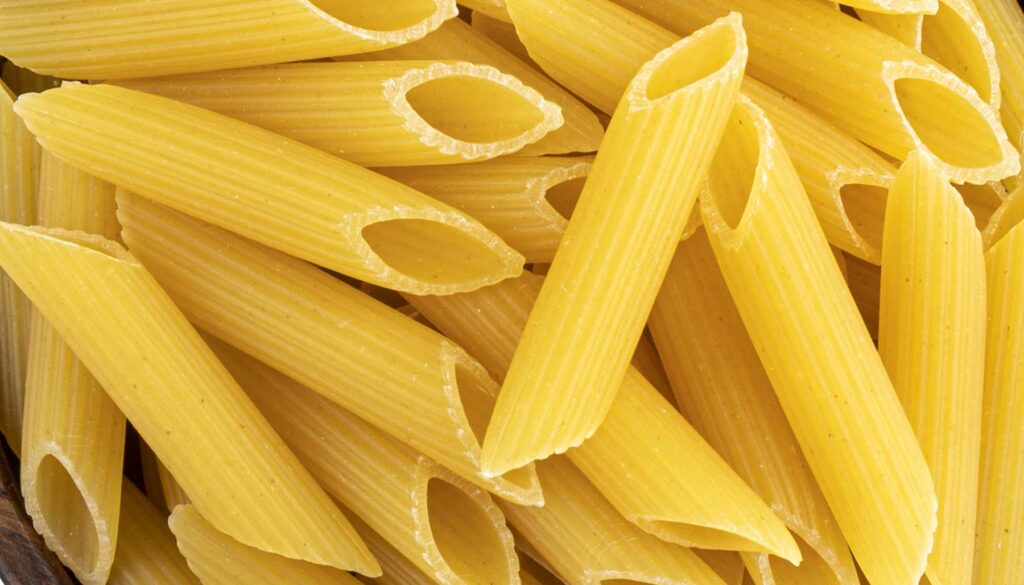
Dry pasta is a really inexpensive item that you can buy in bulk. That’s why it’s great that it never really expires. It can, however, lose quality over time. It might degrade in taste or texture, but that will take a long time. And in fact, dry pasta is more likely to disintegrate than decay.
If you store your pasta in a cool, dry area in the pantry, your pasta should remain safe to eat for a couple of years. An air-tight container will help keep moisture away. Throwing dry pasta in the fridge won’t help extend its life, so just keep it in the cabinet or pantry.
Uncooked Rice

When it comes to uncooked rice, how long it lasts depends on what kind of rice it is. The difference between white and brown rice has to do with how it’s processed. Brown rice is a whole grain and still has the bran and germ intact. These are removed to create refined white rice. That means that the natural oils remain in brown rice, and these are what can spoil.
Because of that, brown rice will keep for up to six months, while white rice will keep pretty much indefinitely if stored correctly. All uncooked rice should be kept in an air-tight container in a cool, dry spot in the pantry or cabinet.













